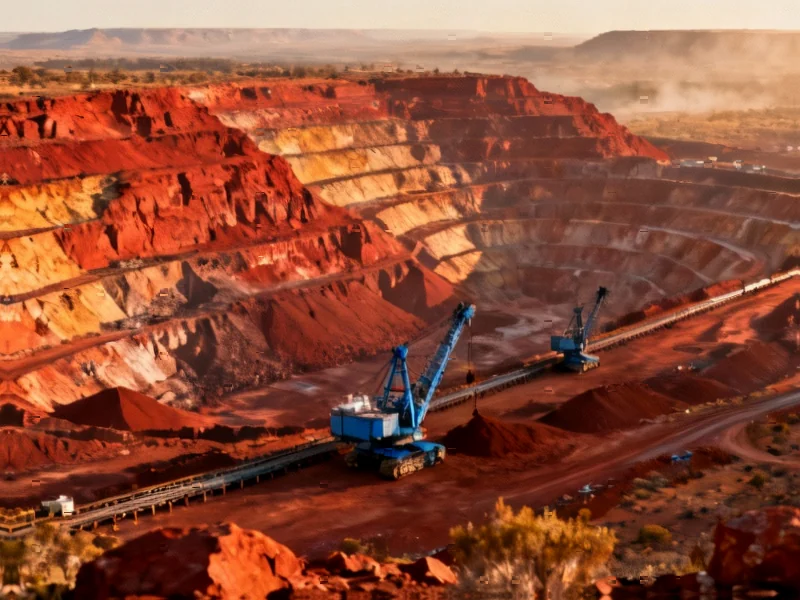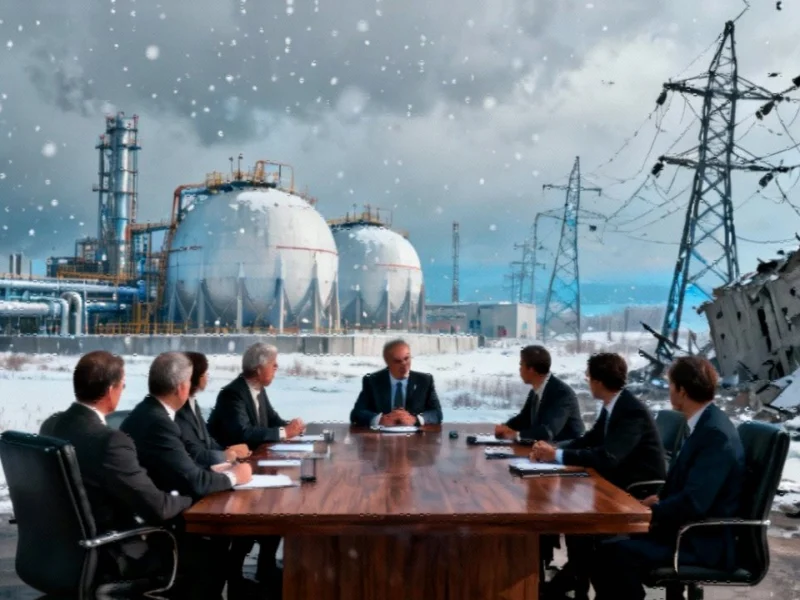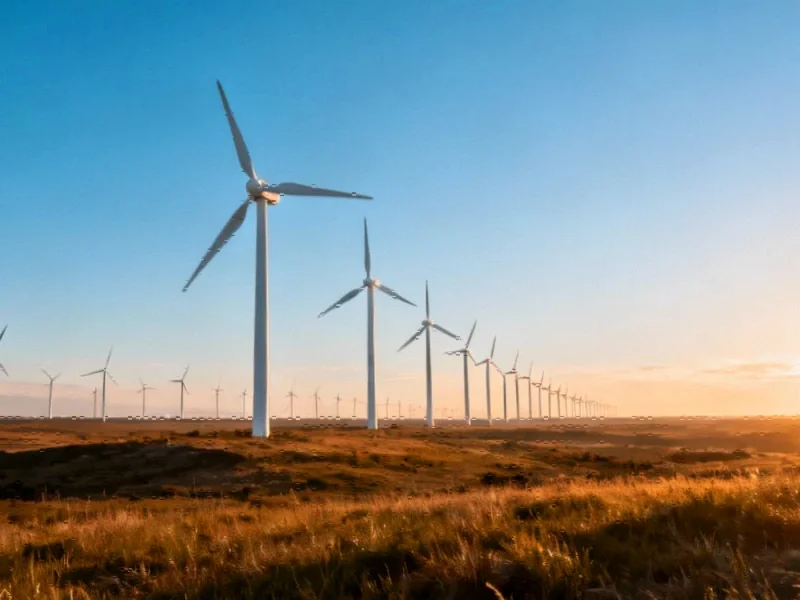For over half a century, the red dirt of Western Australia’s Pilbara region has been the engine of Australian prosperity, feeding China’s insatiable appetite for steel production. But now, this bedrock industry faces its most significant challenge yet—a perfect storm of technological disruption, shifting global demand, and emerging competition that threatens to rewrite the rules of iron ore dominance.
Table of Contents
The Pillars of Prosperity Under Pressure
Walking through Rio Tinto’s new Western Range mine, the scale of Australia’s iron ore operation remains breathtaking. According to recent reports, iron ore shipments accounted for a staggering 4% of Australia’s GDP in the year to March, making the commodity’s price fluctuations a central concern for national budget planning. The symbiotic relationship between Australian miners and Chinese steel producers has created one of modern history’s most lucrative trade partnerships, with Rio Tinto and BHP exporting hundreds of millions of tonnes annually through what amounts to an industrial-scale logistics miracle.
Yet beneath this apparent strength, structural weaknesses are emerging. China’s property sector collapse has created unprecedented volatility in iron ore prices, while Chinese steel production reportedly dropped 4.6% year-on-year in September. More concerning, China’s consolidation of purchasing power through the China Mineral Resources Group gives Beijing new leverage in price negotiations that could squeeze Australian margins permanently.
The Green Steel Revolution
What makes this moment particularly perilous for Australia is the accelerating global push toward decarbonization. The International Energy Agency estimates steel production accounts for approximately 8% of global emissions, creating immense pressure to transition from traditional coal-fired blast furnaces to cleaner alternatives. The problem for Pilbara producers: their iron ore grades aren’t ideally suited for modern electric arc furnaces and direct reduced iron (DRI) processes that form the backbone of green steel production.
This technological mismatch creates a strategic vulnerability that competitors are poised to exploit. As steelmakers across Asia, including China’s Baowu and Japan’s Mitsui, commit to net-zero targets by 2050, they’re actively seeking higher-grade ores that work better with emerging green technologies. Andrew Forrest, the billionaire behind Fortescue Metals, delivered a stark warning that “if the Pilbara refuses to change, it will lose its relevance”—a remarkable statement from someone who built his fortune on the very industry he’s now cautioning.
The Simandou Challenge
Enter Guinea’s Simandou project, what some Australian observers have dramatically dubbed the “Pilbara killer.” Controlled by Rio Tinto alongside Chinese partners, Simandou represents both a competitive threat and strategic paradox for Australian miners. The mine’s higher-grade ore is precisely what steelmakers need for greener production methods, creating a scenario where Australian companies are effectively investing in their own competition.
While Simandou’s initial production of 60 million tonnes annually by 2028 pales beside Western Australia’s 866 million tonne export volume last year, the quality advantage matters more than sheer volume in the emerging green steel landscape. The timing couldn’t be worse for Australian producers, coinciding with BHP’s decision to lower its long-held production target from 330 million to 305 million tonnes annually while shifting investment toward copper and potash.
Adaptation or Obsolescence
The response from Australia’s mining establishment reveals a sector at a crossroads. Rio Tinto’s commitment of over A$20 billion in Pilbara investment over the next five years suggests confidence in the region’s future, while simultaneously the company is piloting electric smelting furnace technology to make lower-grade ores compatible with modern methods. Fortescue’s establishment of a “green energy hub” in the Pilbara to trial hydrogen-fueled electric furnaces represents another pathway toward adaptation.
Yet the economic realities remain daunting. As BHP’s head of Australia Geraldine Slattery noted, producing steel in Australia costs twice as much as in China or the Middle East, creating powerful disincentives for vertical integration. The historical advantage of Pilbara iron ore—its remarkably low extraction and shipping costs—becomes less relevant in a world prioritizing emission reduction over pure cost efficiency.
The Broader Implications
This transition represents more than just an industry shift—it’s a test case for how resource-dependent economies navigate the energy transition. Australia’s situation mirrors challenges faced by other commodity exporters, from Saudi Arabia’s oil dependence to Chile’s copper-focused economy. The common thread: how to leverage existing strengths while building competitive advantages in emerging technologies.
The political dimension adds another layer of complexity. As Australia contemplates using its renewable energy potential to produce green hydrogen for steelmaking, it must balance immediate economic returns against long-term strategic positioning. The pilot electric smelting furnace in Western Australia, subsidized by both state and federal governments, represents a tentative step toward this future, but the scale of investment required remains substantial.
Looking Ahead
The coming decade will determine whether Australia’s iron ore industry evolves or erodes. The critical question isn’t whether demand for steel will persist—global infrastructure needs and urbanization in developing economies ensure it will—but rather what role Australian ore will play in meeting that demand sustainably.
As Fiona Haslam-McKenzie of the University of Western Australia aptly noted, Australia needs to consider “a post-iron ore world” even while the industry remains profitable. The greatest risk may be complacency—continuing to rely on a business model that has delivered decades of prosperity but faces fundamental challenges from both technological disruption and competitive pressure.
What’s clear is that the era of simply digging, training, and shipping iron ore is ending. The miners who recognize this reality and invest accordingly may thrive in the emerging green steel economy, while those clinging to outdated models risk becoming casualties of a transition they failed to anticipate.
Related Articles You May Find Interesting
- Windows Power Users Reclaim Alt+Tab with Custom Tools as Microsoft Simplifies Interface
- PhotoGIMP Patch Finally Makes GIMP a Viable Photoshop Alternative for Professionals
- AI Rewrites Earthquake Science, But Can It Predict the Big One?
- Apple’s M5 MacBook Pro Delivers Stunning SSD Speed Leap That Redefines Mobile Workstations



